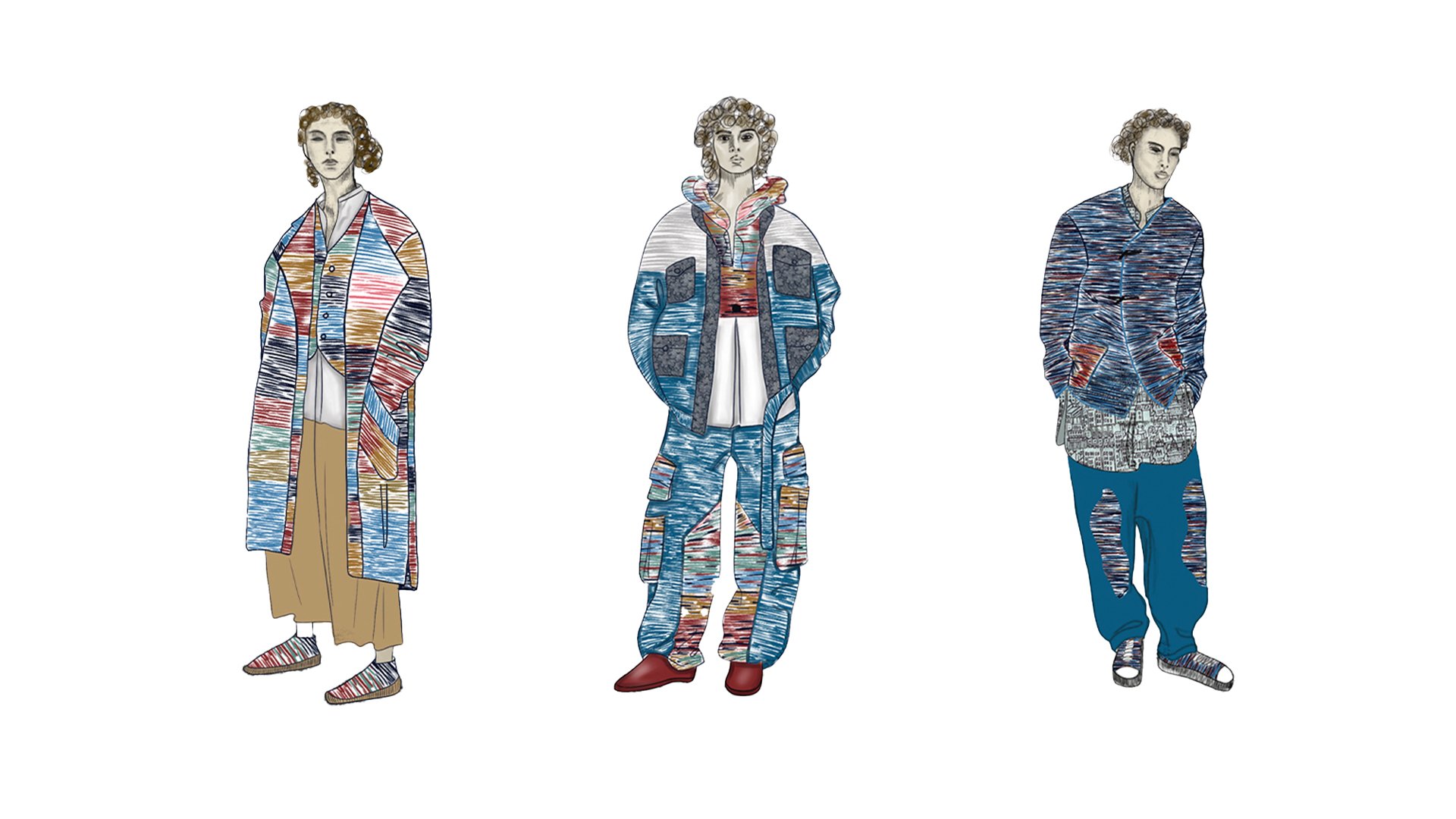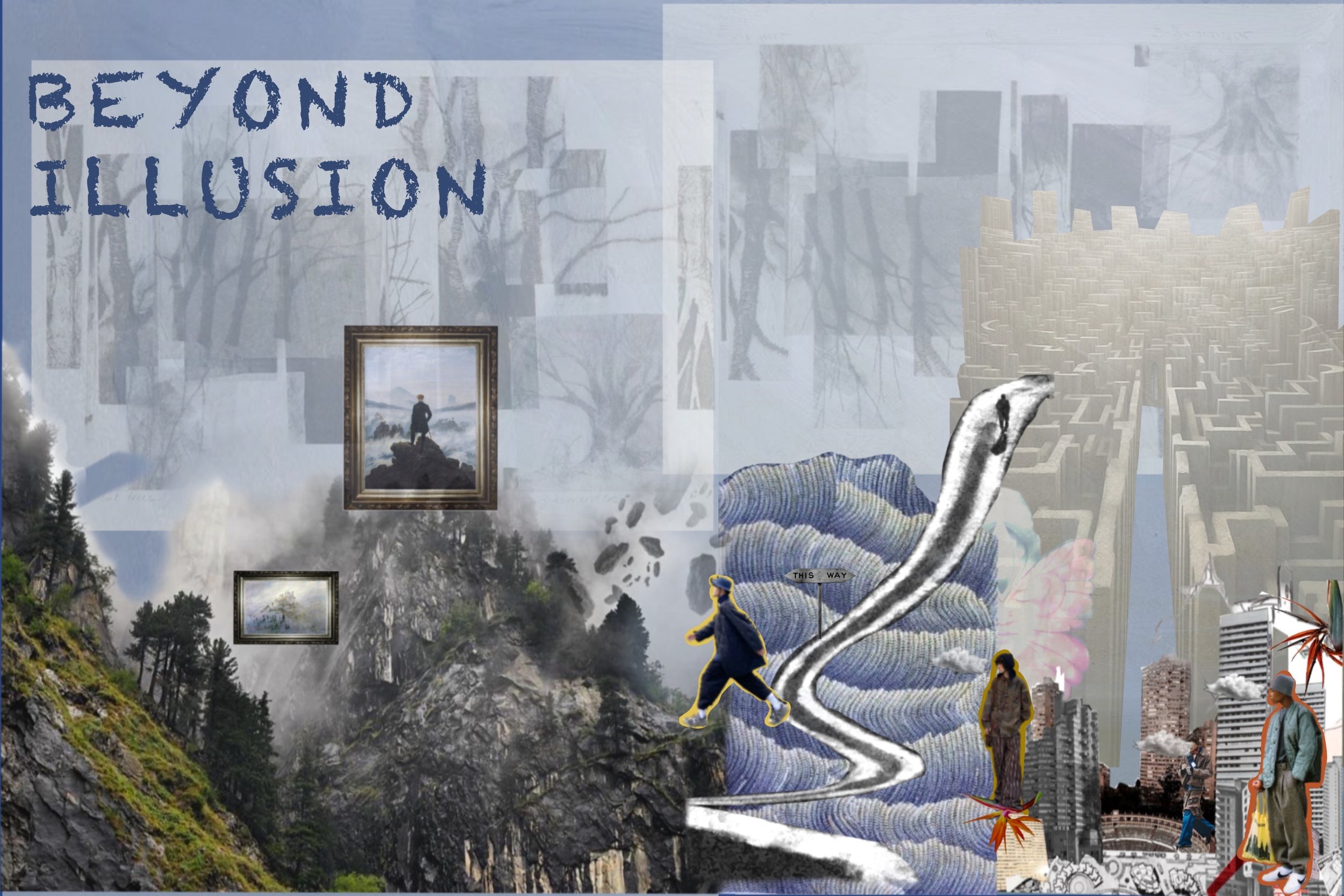Nguyen Thi Dung
Redress Design Award 2024 finalist
Bio
Nguyen Thi Dung is a Finalist of the Redress Design Award 2024. She holds a Higher National Diploma in Art and Design (Fashion) from the London College for Design and Fashion, Hanoi, Vietnam.
“What we wear is not just our clothes, but symbols of responsibility for ourselves and our surroundings.” – Nguyen Thi Dung
redress Design Award Collection
Thi Dung’s Redress Design Award collection, ‘BEYOND ILLUSION’, is inspired by illusions and by the Romantic painting ‘Wanderer above the Sea of Fog’ by Caspar David Friedrich. The collection is created from a range of natural and local waste materials including pineapple silk made from agricultural waste, damaged yarn from a home textile factory, and cut-and-sew linen waste from a tailor shop. Hand-stitched details from the Japanese sakiori technique, traditional natural indigo dye, and modern cuts are combined to create practical, timeless, and adjustable designs, including a vest that can be transformed into a handbag.
Q&A WITH THE DESIGNER
1. Who or what inspired you to pursue sustainable fashion, and inspired the creativity behind your Redress Design Award collection?
My journey into sustainable fashion stems from a deep appreciation for the environment and a desire to reduce waste in the fashion industry. My inspiration comes from nature itself—the majestic beauty and resilience it embodies. Witnessing the impact of fashion waste on our planet motivated me to create a collection that not only showcases creativity, but also emphasises sustainability.
2. What makes your Redress Design Award collection uniquely sustainable? (considering sustainable design techniques you have used in your collection, e.g. zero-waste, upcycling, reconstruction; or waste sources you have chosen)
At the heart of the ‘Beyond Illusion’ collection are designs that utilise the ancient weaving technique sakiori and the traditional natural indigo dye method combined with modern cuts. I use pineapple yarns made from agricultural waste, discarded fabrics, damaged yarns, and leftover fabric sourced from my previous collection. All ingredients are sourced locally, and I design with monofibre for recyclability. All of this creates practical, fashionable pieces that bring a delicate combination of the old and the new.
Excess pieces of fabric are saved for potential new products, used in mending, filling, or being spun into new yarn for the next weaving. The designs are adjustable and can be easily combined with other items to create new looks, adding fun and diversifying styles while minimising the wearer’s need to own similar outfits. A multifunctional vest design can be transformed into a convenient handbag.
Each product tells an original, authentic story that creates attachment for the wearer.
3. What is your career dream or goal? How do you see yourself developing in sustainable fashion in the future?
My ultimate career goal is to become a sustainable fashion designer. I aim to create my own brand that sets industry standards for sustainable design and ethical manufacturing.
In the future, I hope to cooperate with local artisans. This collaboration will not only enrich my designs but also promote the cultural heritage and craftsmanship of different communities. Combined with my use of local sustainable materials, this approach will also reduce negative environmental impact.
I am always researching ancient weaving and dyeing techniques to incorporate into my future products. By integrating these elements, I aim to create a brand that celebrates both sustainability and cultural diversity. I also hope to educate consumers about the importance of sustainability and inspire them to make more informed fashion choices.
4. As a sustainable fashion designer, what is one item you must always keep with you?
I always carry a small sketchbook with me. It’s a great tool to record and sketch out my random ideas, while documenting new sustainable methods, techniques, or materials I find. It helps me ensure that I capture every bit of inspiration that can be translated into sustainable fashion.
5. Anything else you would like to share with us about you or your collection?
The message I want to convey through fashion is: Everyone must be responsible for their own consumption behaviour. People cannot rely on one organisation or person to solve our guilt of overconsumption. People should stop looking outside and turn inwards instead, always reflecting on themselves, and returning to their roots. When people understand themselves, they will not be easily swayed by the opinions of others, people around them, trends, or prejudices of society. They will naturally have stability, and from that flows a sustainable lifestyle.
News
REGION:
Vietnam
DESIGN TECHNIQUES:
Upcycling
COLLECTION:
Menswear







